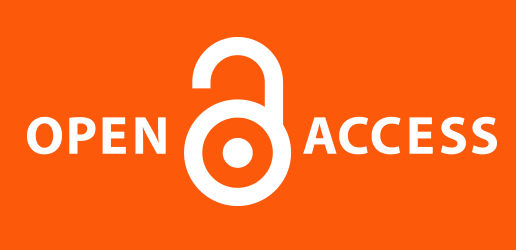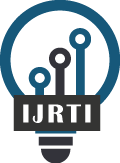|
International Journal for Research Trends and Innovation
International Peer Reviewed & Refereed Journals, Open Access Journal
ISSN Approved Journal No: 2456-3315 | Impact factor: 8.14 | ESTD Year: 2016
Scholarly open access journals, Peer-reviewed, and Refereed Journals, Impact factor 8.14 (Calculate by google scholar and Semantic Scholar | AI-Powered Research Tool) , Multidisciplinary, Monthly, Indexing in all major database & Metadata, Citation Generator, Digital Object Identifier(DOI)
|
Issue: December 2025
Volume 10 | Issue 12
Review Result and Publication of Paper within : 2-3 days
Click Here For more DetailsFor Authors
Forms / Download
Published Issue Details
Editorial Board
Other IMP Links
Facts & Figure
Impact Factor : 8.14
Issue per Year : 12
Volume Published : 10
Issue Published : 115
Article Submitted : 19446
Article Published : 8041
Total Authors : 21252
Total Reviewer : 769
Total Countries : 144
Indexing Partner
Licence
This work is licensed under a Creative Commons Attribution-NonCommercial 4.0 International License







|
Published Paper Details
|
|
| Paper Title: | A Review on Management of Phosphorus in Hemodialysis Patients |
| Authors Name: | Dr.C.Vaishnavi Devi , Aarthi A , Abi Monika A P , S.Abirami |
| Download E-Certificate: | Download |
| Author Reg. ID: |
IJRTI_184548
|
| Published Paper Id: | IJRTI2211026 |
| Published In: | Volume 7 Issue 11, November-2022 |
| DOI: | |
| Abstract: | Hyperphosphatemia is a common complication of end-stage renal disease due to decreased renal phosphate excretion. The ideal range for serum phosphate levels in CKD patients is between 3.5 and 5.5 mg/dl. CKD-MBD is linked to bone disease, cardiovascular calcification and higher morbidity and mortality rates. The management of hyperphosphatemia consists of 4 main strategies: (i) restricting dietary phosphorous intake (ii) reducing its intestinal absorption (iii) phosphate remapping and (iv) treatment and prevention of renal osteodystrophy. Phosphate binder drug therapy is the cornerstone of management. But in dialysis patient an average phosphorous intake is about 1500 mg/day or 10,500 mg/week and if it has 50% of absorption rate then more than 5000 mg of excess phosphorous has to be removed by dialysis. Hence a neutral phosphate balance can’t be maintained only with conventional hemodialysis or peritoneal dialysis. Hence the 3Ds of therapy for hyperphosphatemia includes diet, dietary restrictions, and medication. |
| Keywords: | Hyperphosphatemia, CKD-MBD, diet, phosphate binders, hemodialysis. |
| Cite Article: | "A Review on Management of Phosphorus in Hemodialysis Patients", International Journal of Science & Engineering Development Research (www.ijrti.org), ISSN:2455-2631, Vol.7, Issue 11, page no.165 - 169, November-2022, Available :http://www.ijrti.org/papers/IJRTI2211026.pdf |
| Downloads: | 000205204 |
| ISSN: |
2456-3315 | IMPACT FACTOR: 8.14 Calculated By Google Scholar| ESTD YEAR: 2016 An International Scholarly Open Access Journal, Peer-Reviewed, Refereed Journal Impact Factor 8.14 Calculate by Google Scholar and Semantic Scholar | AI-Powered Research Tool, Multidisciplinary, Monthly, Multilanguage Journal Indexing in All Major Database & Metadata, Citation Generator |
| Publication Details: |
Published Paper ID: IJRTI2211026
Registration ID:184548
Published In: Volume 7 Issue 11, November-2022
DOI (Digital Object Identifier):
Page No: 165 - 169 Country: Namakkal , Tamil Nadu , India Research Area: Pharmacy Publisher : IJ Publication Published Paper URL : https://www.ijrti.org/viewpaperforall?paper=IJRTI2211026 Published Paper PDF: https://www.ijrti.org/papers/IJRTI2211026 |
| Share Article: | |
|
Click Here to Download This Article |
|
| Article Preview | |
|
|
|
Major Indexing from www.ijrti.org
| Google Scholar | ResearcherID Thomson Reuters | Mendeley : reference manager | Academia.edu |
| arXiv.org : cornell university library | Research Gate | CiteSeerX | DOAJ : Directory of Open Access Journals |
| DRJI | Index Copernicus International | Scribd | DocStoc |
ISSN Details
 |
 |
ISSN: 2456-3315
Impact Factor: 8.14 and ISSN APPROVED,
Journal Starting Year (ESTD) : 2016
DOI (A digital object identifier)
 Providing A digital object identifier by DOI.ONE How to Get DOI? |
Conference
Open Access License Policy
Important Details
Join RMS/Earn 300
WhatsApp
Click Here
Click Here
Indexing Partner |
|||
| Copyright © 2025 - All Rights Reserved - IJRTI | |||






